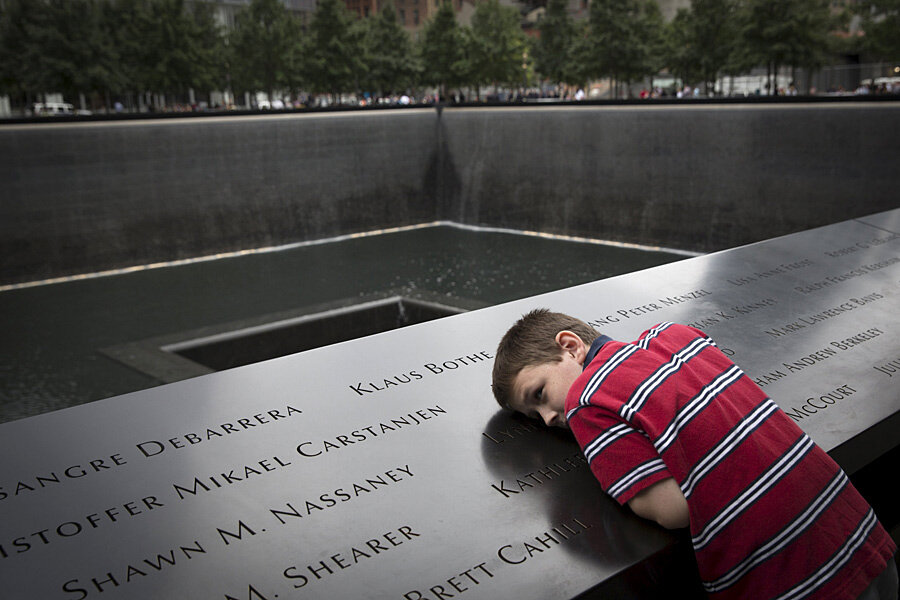How a bank cared for the children of employees lost in 9/11
Loading...
It’s a well-worn cliché at this point, but the morning of Sept. 11, 2001, seemed just like any other.
It started with the employees of Sandler O'Neill & Partners streaming into their New York City workplace, taking their posts in their cubicles and corner offices, the azure blue sky arching high above the resolute skyscrapers of Manhattan.
That day, there were 83 employees of the investment banking firm who worked on the 104th floor of the World Trade Center's south tower.
At 9:03 a.m. hijackers crashed United Airlines Flight 175 into that building, killing 66 of the firm’s employees. Between them, those 66 men and women had 76 children.
Since those fateful moments, 9/11 has come to stand for, among other things, extraordinary stories of heroism, unselfishness, and generosity. One of those stories is how surviving employees and friends of Sandler O'Neill came together to ensure that those 76 children would have their college costs fully paid for.
When one of the firm’s senior managing principals, Jimmy Dunne, was asked why he felt a responsibility to act, he answered quite simply.
"Because we believed that what we did would echo for a hundred years in the families of our people, their kids, and their grandkids,” he told Oregon Live in an interview published this month. “Because how we conducted ourselves in those first few hours and days would define who we really were and what we were about. Because I knew that if we were not honorable, then we stood for nothing.”
On Sept. 17, 2001 – the day the stock market reopened – CNBC reported that Sandler O'Neill was out of business. Mr. Dunne angrily rebutted that assertion two days later on the network, vowing that the firm would rebuild.
From a temporary office space lent by Banc of America, the company flickered back to life at a speed faster than seemed possible after the loss of almost 40 percent of its workforce. Two months after the attacks, the business was profitable again.
In the intervening 14 years, Sandler O'Neill has added staff and reopened offices, growing even larger than it was before the attacks.
And while some other firms waffled, Sandler O’Neill set out to make things right with the families of deceased employees. The firm agreed to pay full salaries to victims’ families through the end of 2001, plus maximum-level bonuses, as well as extended health coverage for dependents.
But perhaps the most poignant way that the firm sought to honor and remember the people they lost on 9/11 was by helping the children left without a parent after the attacks.
A group of employees and friends raised millions of dollars to start the Sandler O’Neill Assistance Foundation, which is now funded by the company. The foundation’s express purpose is to pay 100 percent of the children’s college costs, without regard to merit or need.
In that mission, too, the business has succeeded. A total of 54 students have so far had their tuitions paid for by the foundation, with 22 children still eligible.
Four have chosen to attend Boston College, the alma mater of Welles Crowther, the heroic “Man in the Red Bandana” – a Sandler O’Neill equities trader who sacrificed himself and saved as many as 12 people by plunging repeatedly back up into the smoke-filled floors.
“I know most of the children who went to college,” foundation co-founder Andy Armstrong told Oregon Live. “You wouldn't believe some of the letters they have written in appreciation. I think they particularly appreciate that we remember their mom or dad this way. Many of them hardly knew their moms and dads."
The foundation will cease operations when it fulfills its obligation to the youngest child who lost a parent in the attacks – a 13-year-old who was born a mere six weeks after Sept 11.
A few months after the attacks, and in between calls to business partners and grieving spouses, Dunne was asked by Fortune magazine why he was splitting his time to help the families, when he was also trying to revive the firm.
"Fifteen years from now, my son will meet the son or daughter of one of our people who died that day, and I will be judged on what that kid tells my son about what Sandler O'Neill did for his family," he answered.
One year away from that self-imposed timeline, Dunne’s son may already know what he will hear.








